The most serious challenge to the growth of research and innovation in India is our education system, Dr Shahid Jameel CEO the Wellcome Trust/DBT India Alliance tells Deepika Khurana in an exclusive interview.
When eminent scientist and virologist Dr Shahid Jameel joined the Welcome Trust/DBT India Alliance as its CEO in 2013, he was absolutely delighted at the possibilities.
“I was drawn to it,” he admits in an exclusive interview to Health Analytics Asia. “India has done well when it comes to Biotechnology. If we compare the market size, it has gone up from $1 billion in 2005 to $11.6 billion in 2017,” says Dr Jameel. “Now there is an aspiration to take India’s biotech market size to $100 billion by 2025, i.e. go from 2% to 20% of global market share, which I feel is unrealistic, but it is good to have a vision. With vision comes a clear pathway and strategies,” adds Dr Jameel.
Recently when the Government of India announced a five-year extension to the funding and support to the Wellcome Trust/DBT India Alliance, Dr Jameel couldn’t be more proud. “This is exciting as the Alliance will help us to create new benchmarks for research funding, engagement and ecosystem development in India,” he says.
An alumnus of Aligarh Muslim University and the Indian Institute of Technology Kanpur, Dr Jameel earned his PhD in Biochemistry from the Washington State University Pullman, USA. His post-doctoral work in Molecular Virology was carried out at the University of Colorado Health Sciences Center, Denver, USA. With numerous awards and prestigious fellowships under his belt, Dr Jameel’s abundant passion, commitment and dedication for his work comes as no surprise. But he has clearly delineated boundaries between work and personal life. And, even before he tells us about his appetite for reading while pointing a stack of books in his office, The Geek Manifesto – Why Science Matters by Mark Henderson and Connectography by Parag Khanna caught my gaze. “I start three or even more books at a time. But I am highly selective about what I read,” adds Dr Jameel, who is a voracious reader and an avid photographer.
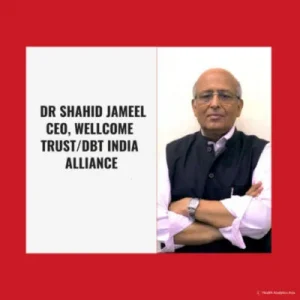
In a wide-ranging interview, Dr Jameel talks about India’s challenges in biotechnology field, poor research culture at medical institutions and hospitals, fake news and why young people with stellar CVs frequently write poor grant applications and do badly at interviews.
Excerpts from the interview:
1. What is India’s potential in terms of biomedical research?
India has very good potential for biomedical research. The climate and population density makes it conducive to infectious disease. Intra-caste and community marriages ensure that genetic disorders carry through in the population. With changing lifestyles chronic and metabolic diseases are increasing. So there are plenty of problems to address.
But, there are as many challenges to be faced. For instance, Biomedical research in our country is mainly done at basic science institutes with little input from physicians, who have clinical insights that can help frame suitable questions and put research findings into practice. But the culture of research is non-existent at most medical institutions and hospitals. The lack of MD/PhD programmes in India leaves a big gap in training physician scientists. However, where there is concerted investment and effort, India has done well. Take the example of Biotechnology- the market size has grown from $1 billion in 2005 to $11.6 billion in 2017. But it is still 2% of the global biotech business. So, it’s important we understand the challenges and clearly address them through policy intervention.
2. What are the common challenges faced by Indian researchers?
The easiest answer would be funds, but there are other reasons as well. The Gross Expenditure on Research and Development (GERD) for India has quadrupled in the last decade – from ~24,000 crores in 2004-05 to ~104,000 crores in 2016-17. However, the public spend on R&D has stagnated at 0.6-0.7% of GDP over the past two decades. Compare this to most developed and transitioning economies, which spend 2-4% of their GDP on R&D. This is reflected in the output – knowledge (publications) and innovation (patents). Let’s compare to China. Between 1990 and 2011, publications from India went from 12,000 to 36,000 per annum; from China these increased from 6,000 to 122,000 per annum.
In 2015, India filed 45,000 patents compared to 1 million by China. The other factor responsible for this is our researcher density – 156/million population compared to 1113/million for China. The most serious challenge to the growth of research and innovation in India is our education system, which is siloed and risk-averse. It encourages rote learning and unidirectional thinking and places little emphasis on problem solving. Besides, there is poor management structure at institutions, with researchers getting little pre- or post-award support. A researcher spends far too much time on non-research activities, which is not the best utilisation of his/her time. Another challenge is that funds once awarded do not get to researchers on time. Some of it is due to poor management at institutions, but funding agencies also need to streamline their scientific review and funds release processes.
3. According to you which India Alliance-funded research has been the most promising or exciting one?
There are many fellows who have done outstandingly well. They have pushed the boundaries of knowledge in their area of research, published highly cited work, received important national and international awards, etc. But I think with all the investment the taxpayer has made, one must ask what are the visible, translatable and evidence-driven policy impacts? Our researchers have done ground-breaking researches in different areas – from nutrition and cancer to mHealth and rural health, etc. Infact, one of our fellows Prof. Vaskar Saha (TMC, Kolkata) has developed a new drug regimen to treat childhood leukemia and Prof. Vikram Mathews (CMC, Vellore) has done the same for treating acute promyelocytic leukemia, which is in phase II trials. Similarly, Dr Tavpritesh Sethi (IIT Delhi) has used big data algorithms to predict the onset of sepsis up to 12 hours earlier in pediatric ICUs. So, I can cite many examples.
4. With the Indian government approving five years extension of BRCP (Biomedical Research Career Programme) what will be your key commitments, priorities and strategies. Also, were there any key takeaways from the first phase of this 10-year programme.
We are grateful to both funders – DBT and Wellcome for the 5-year extension of the Programme. The Govt of India also accepted DBT’s proposal to double its contribution to India Alliance. So effectively we have 50% more funds in Phase 2 than we had in Phase 1. Now, how do we plan to spend these? The individual fellowships would continue as earlier in two streams – basic biomedical research and clinical and public health research; and for three career stages – early, intermediate and senior. We have selected and funded outstanding individuals, who are already becoming leaders. So this would continue. But it is also time for outstanding people to come together as effective teams.
A key commitment we are making in Phase 2 is to bring programmes that directly address health challenges for India, and simultaneously improve India’s clinical research ecosystem. Consequently, over the next 5 years, we are also investing in Team Science Grants and Clinical/Public Health Research Centres. Team Science Grants are envisioned as multi-institutional and multi-disciplinary approaches to address health challenges for India. Clinical and Public Health Research Centres would be virtual centres (cross-cutting or vertical) with the aim of developing physician scientists. Again, the idea is to collaborate to maximise the chances of success. There are many success stories from the first phase. But I feel a few things define us: Excellence, Flexibility and Integrity. We will not compromise on quality and select only the most outstanding people.
5. How many fellowships has India Alliance funded in the last couple of years?
In the last decade, India Alliance has awarded 351 fellowships at 99 institutions in 36 cities. Of these, 317 fellowships have been operationalised and 216 are currently active. About 80% of the fellowships have been awarded to people early in their professional career – 30% Early Career Fellowships and 50% Intermediate Fellowships.
6. What has been the biggest challenge while selecting fellows for research?
The biggest challenge has been poor support and mentoring of researchers at Indian institutions, especially at universities. Young people with stellar CVs frequently write poor grant applications and do badly at interviews. This results from an ecosystem that does not care and has no stake in their success. Another challenge we have faced is the leaky pipeline for women researchers. While 50% of our early career fellows are women, this goes down to 38% at the intermediate and 10% at the senior fellowship levels. This again is an ecosystem challenge. We are trying to address this by ensuring that our women Fellows are supported for continued professional development through maternity and childcare breaks.
7. Is the problem of “fake news” affecting Science and scientific researches as well? If so, how serious is the problem and what are the ways to combat it?
“Fake News” affects scientists as much as it affects anyone else. But one expects that scientists, who are trained to look at evidence and be naturally sceptical, to question everything more than someone without a training in science. A bigger worry is “Fake Data” or let’s say data that is not rigorously checked and analysed, and which leads to wrong conclusions. In science, data should be the basis of hypotheses and not the other way around. Unfortunately, a lot of that is happening. You can see the PubPeer storm that is raging these days. Increasing pressure to publish – the “publish or perish” paradigm, wherein publications are linked to everything from career advancement to research funds, is responsible for scientists taking short cuts or some blatantly falsifying results.
Besides the loss of individual prestige, position and funding, this has even wider macro-level problems in terms of waste of public money (spent on research) and the loss of credibility of science and scientists. The best way to tackle this is internally as a community that polices itself, that trains the younger generation in rigorous scientific methods and research ethics, and that trains the mind to question and make evidence the basis for all conclusions. This approach helps not just scientists but also society to be objective and make reason the basis for solving its problems. Unfortunately, very little of this happens in our schools and universities where minds and personalities are shaped. For apprentice scientists, there is hardly any formal training in research ethics in PhD training programmes in India. We must do this if we are to contain the menace.



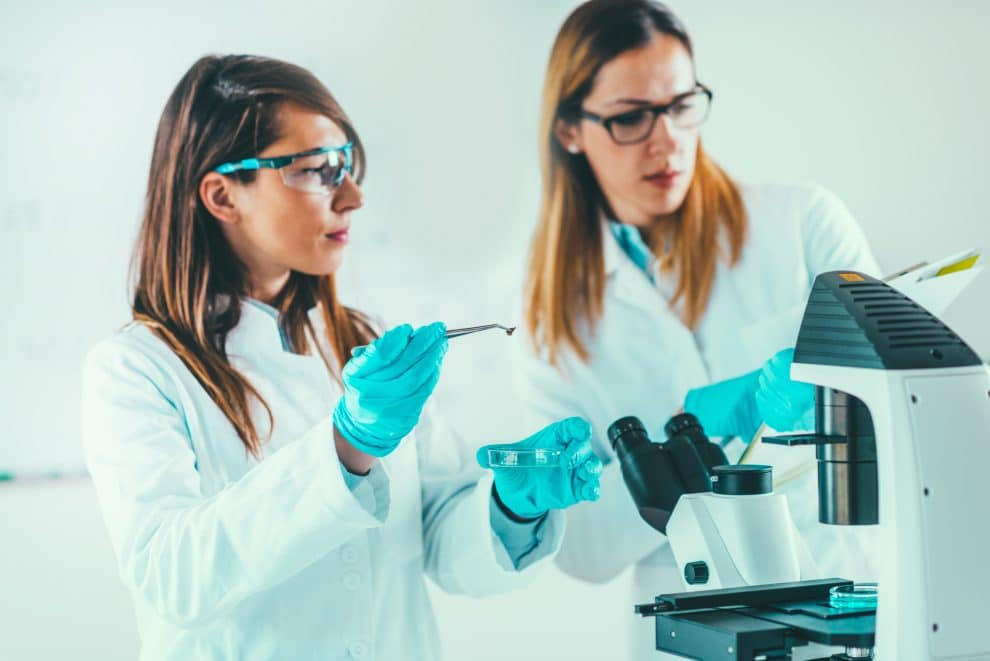
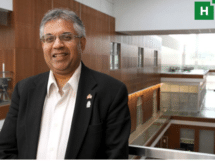
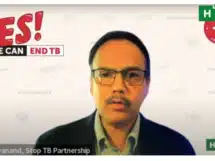


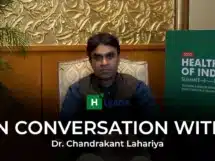









Add Comment